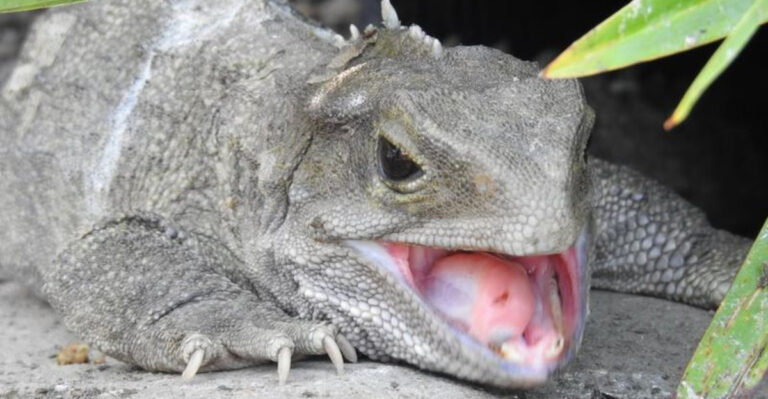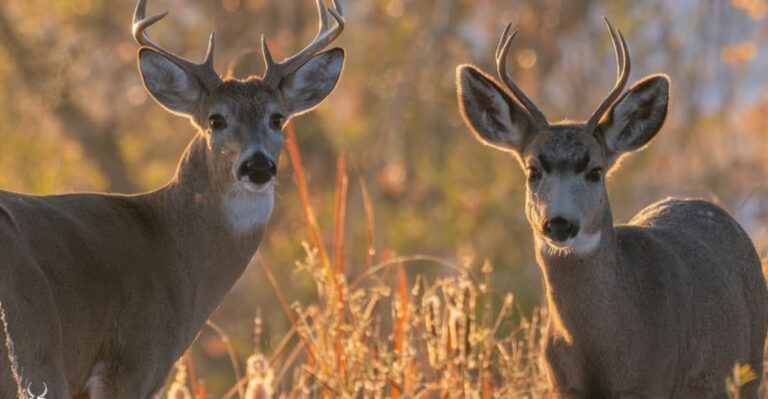12 Best Milkweed Types For Helping Monarch Butterflies
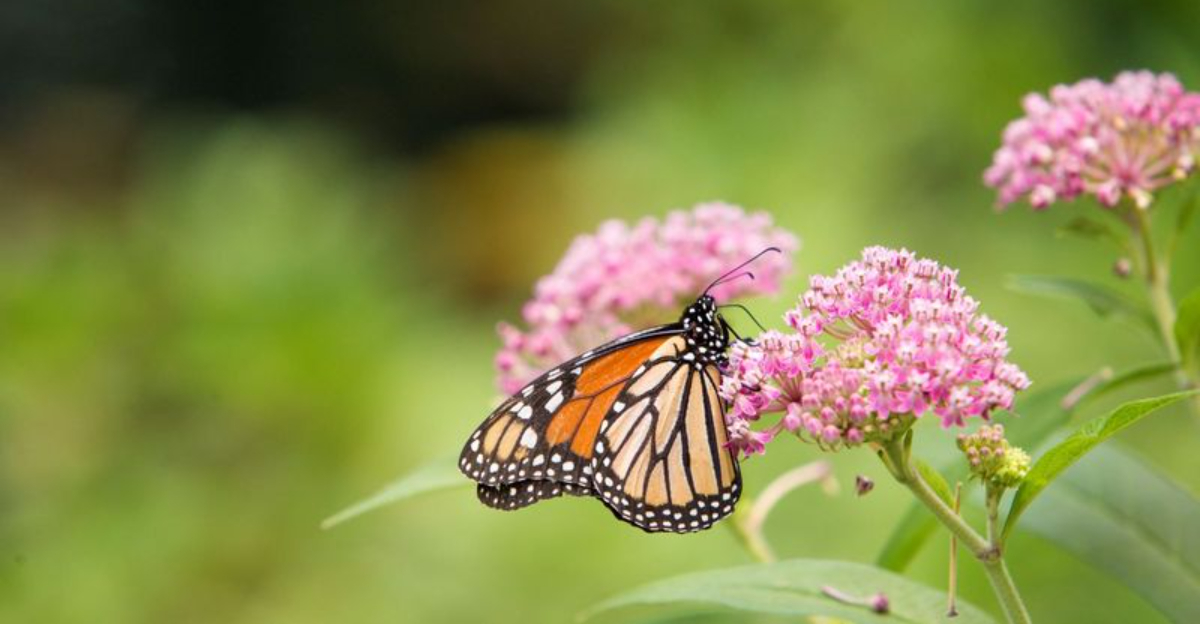
Monarch butterflies face a serious survival challenge as their habitats shrink across North America. These orange-and-black beauties rely completely on milkweed plants – it’s the only food their caterpillars can eat!
Planting the right milkweed varieties in your garden creates a butterfly sanctuary while helping save these amazing pollinators from extinction.
1. Common Milkweed (Asclepias Syriaca)
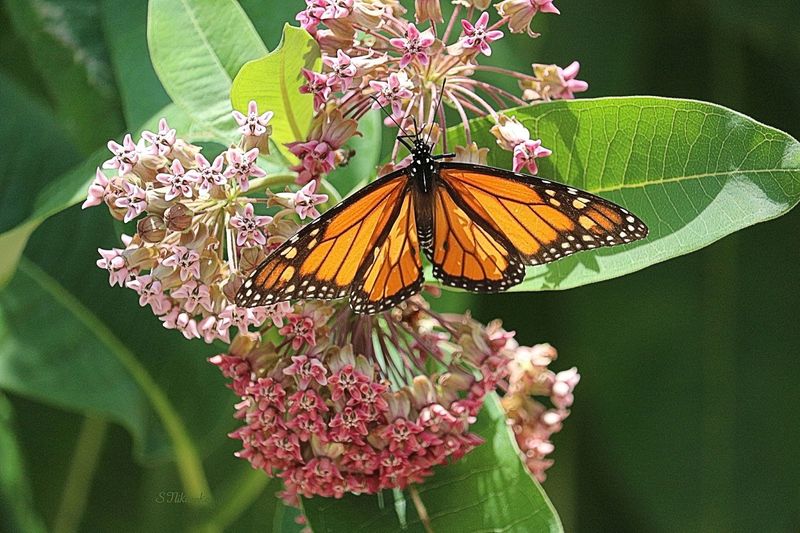
The workhorse of monarch conservation stands tall in summer gardens with its fragrant pink-purple flower clusters. Native to eastern North America, this hardy perennial spreads through underground rhizomes, creating monarch nurseries wherever it grows.
Monarchs absolutely love laying eggs on its broad leaves. The plant contains just the right amount of protective compounds that caterpillars store to become unpalatable to predators.
2. Butterfly Weed (Asclepias Tuberosa)
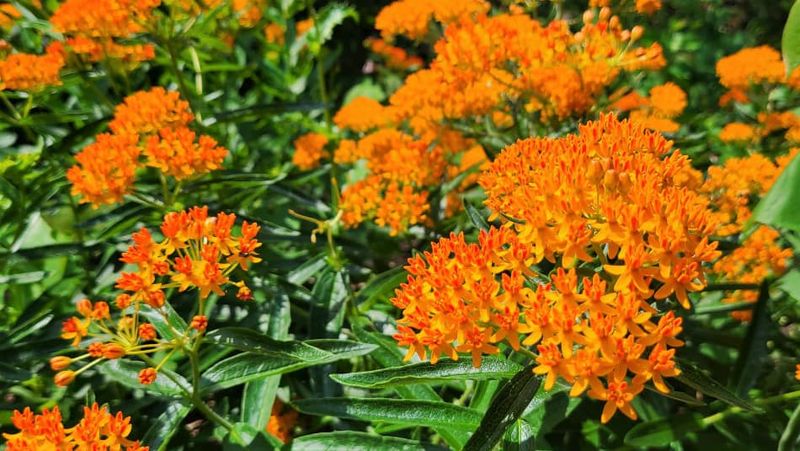
Fiery orange blooms steal the show in this drought-resistant milkweed variety. Unlike its cousins, butterfly weed doesn’t produce the milky sap that gives the family its name, making it cleaner to handle in garden settings.
Perfect for sunny, well-drained spots, this showstopper attracts not just monarchs but numerous other pollinators. Its deep taproot means it’s best planted where it can stay undisturbed for years.
3. Swamp Milkweed (Asclepias Incarnata)
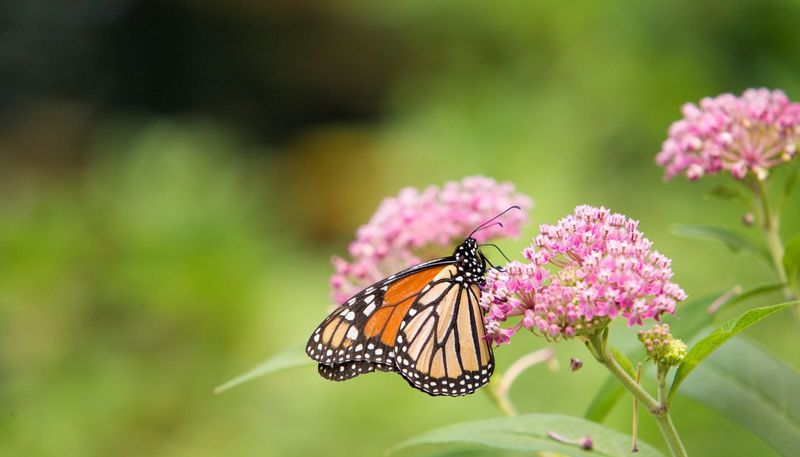
Despite its soggy-sounding name, this elegant milkweed thrives in average garden soil while tolerating wet conditions other varieties can’t handle. The vanilla-scented pink flowers bloom on tall, slender stems that dance in summer breezes.
Gardeners love its well-behaved clumping habit and lack of aggressive spreading. Monarchs appreciate its tender leaves, which provide ideal nursery sites for their hungry caterpillars.
4. Tropical Milkweed (Asclepias Curassavica)
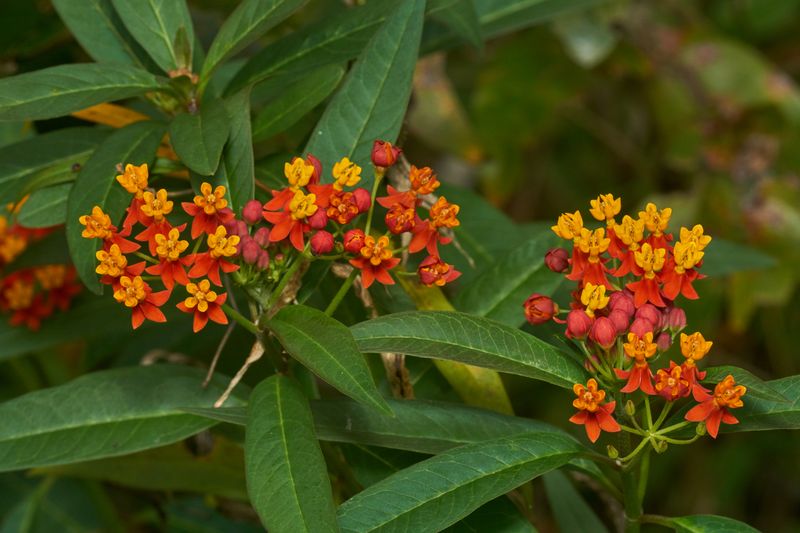
Sunshine-yellow and red blooms make this non-native showstopper instantly recognizable. Popular in warmer regions for its long blooming season, tropical milkweed requires special management in places without winter freezes.
In frost-free areas, cutting it back in late fall prevents parasite buildup that can harm monarchs. Northern gardeners can enjoy it as an annual or container plant without these concerns.
5. Showy Milkweed (Asclepias Speciosa)
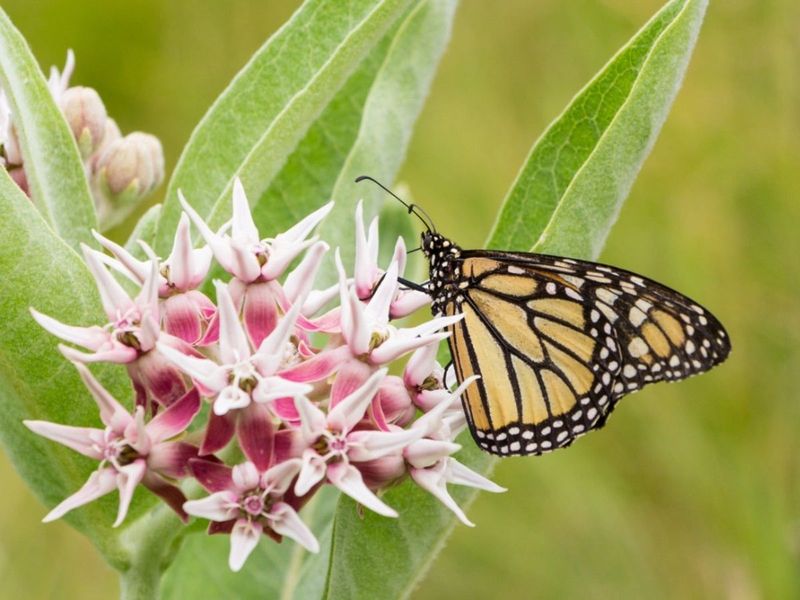
Star-shaped blooms the size of golf balls make this western native a true garden standout. Its soft, fuzzy leaves and stems create a silvery appearance that adds beautiful texture to naturalistic landscapes.
Western monarch populations particularly favor this adaptable milkweed. Though it spreads through rhizomes, it’s less aggressive than common milkweed, making it suitable for smaller gardens with room to roam.
6. Whorled Milkweed (Asclepias Verticillata)
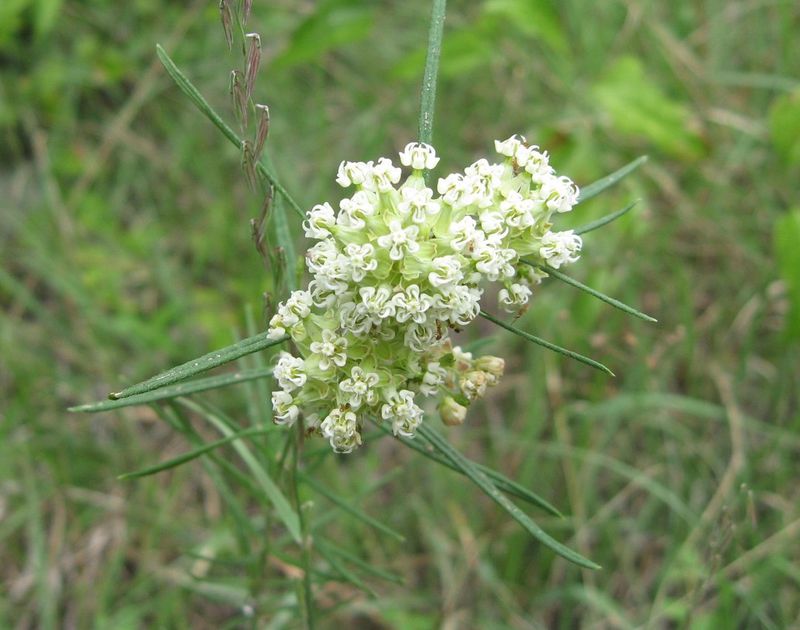
Needle-like leaves arranged in whorls around delicate stems give this milkweed a feathery, almost conifer-like appearance when not in bloom. Come summer, the slender stalks burst into clusters of small white flowers that butterflies can’t resist.
Perfectly suited for dry, rocky sites where other plants struggle, this tough native tolerates poor soil with grace. Its petite size makes it ideal for smaller gardens or wildflower meadows.
7. Purple Milkweed (Asclepias Purpurascens)
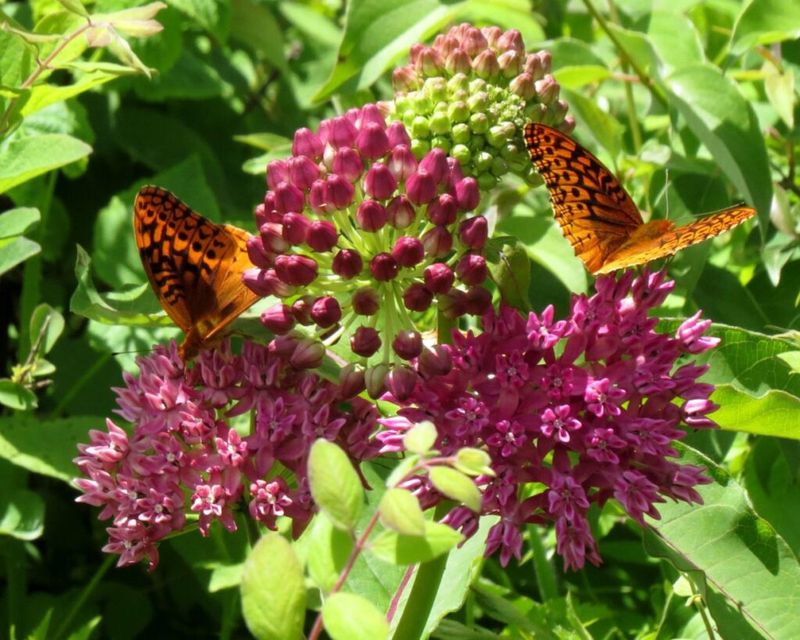
Rich rose-purple flower clusters crown this increasingly rare woodland beauty. Once common throughout eastern forests, purple milkweed now needs gardeners’ help to maintain healthy populations in the wild.
Growing in dappled shade where many milkweeds won’t thrive, this species fills an important niche in woodland gardens. Its deep pink blooms appear earlier than many other milkweeds, extending the monarch breeding season.
8. Antelope Horns Milkweed (Asclepias Asperula)
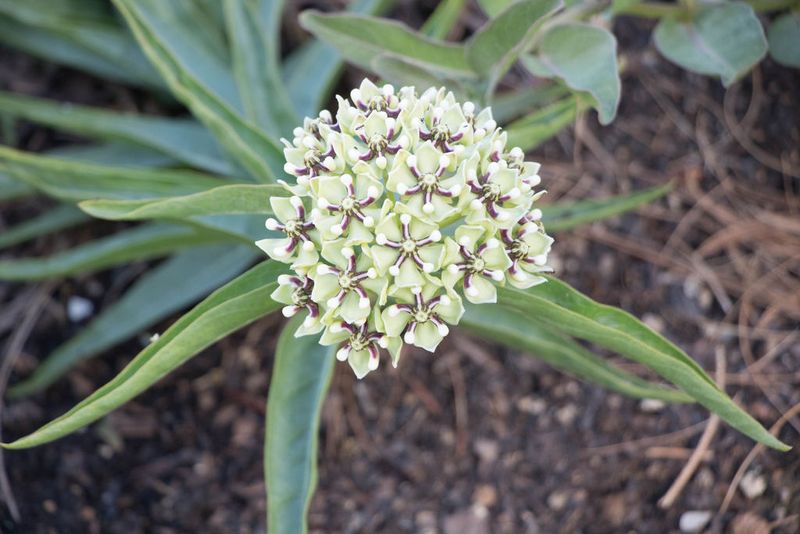
Curiously curved seed pods resembling antelope horns give this southwestern native its memorable name. Low-growing with greenish-white flowers tinged with purple, it thrives in hot, arid conditions where other milkweeds would wither.
Desert gardeners treasure this drought-master for its ability to support monarchs with minimal water. Its waxy leaves conserve moisture while still providing perfect nursery sites for butterfly eggs.
9. Poke Milkweed (Asclepias Exaltata)
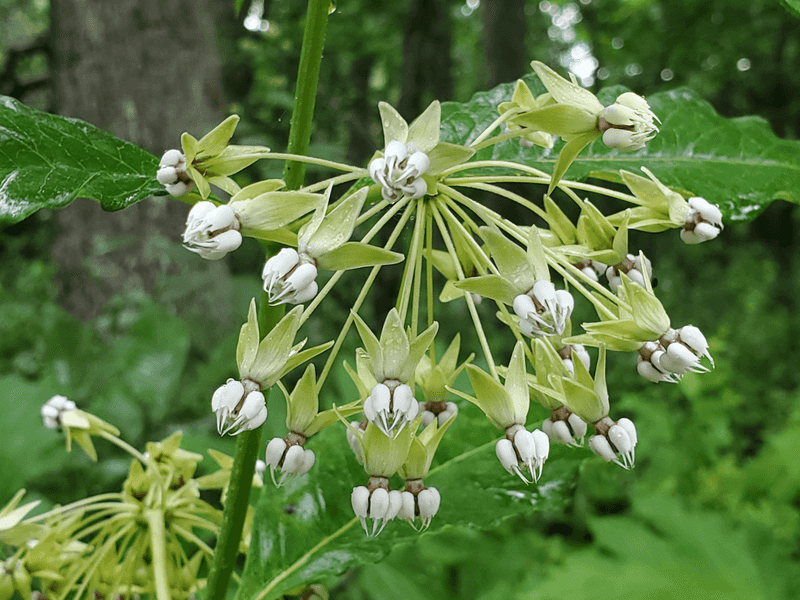
Woodland edges come alive with the elegant white blooms of this shade-tolerant species. Unlike most sun-loving milkweeds, poke milkweed thrives in the dappled light found at forest borders and in open woods. Its tall, arching stems create a graceful presence in naturalistic gardens.
Monarchs seeking egg-laying sites in partially shaded areas particularly appreciate this adaptable native that connects sunny meadows to forested landscapes.
10. Green Milkweed (Asclepias Viridis)
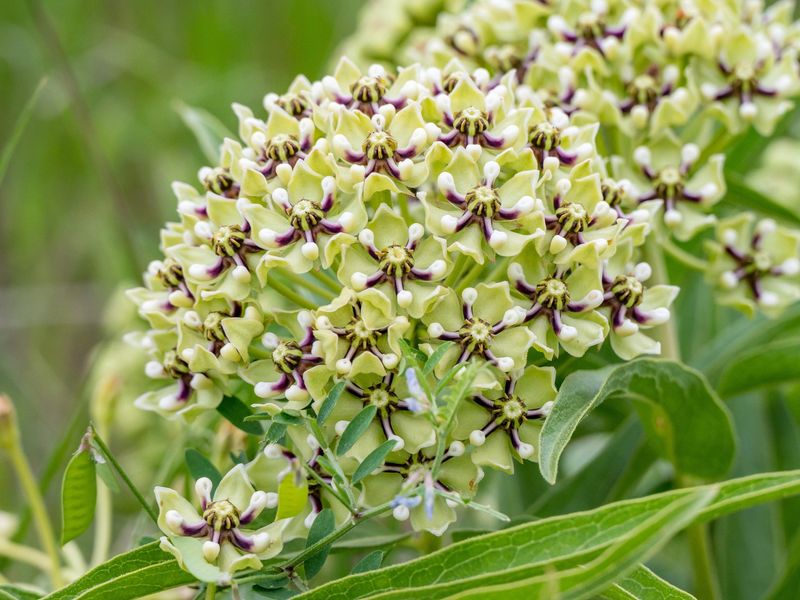
Subtle beauty defines this prairie native with its green flowers accented by purple centers. Often overlooked in favor of showier milkweeds, this sturdy species supports countless monarchs across America’s heartland.
Early to emerge in spring, green milkweed provides crucial early-season support for the first monarch generation. Its drought tolerance makes it perfect for rain gardens and areas with unpredictable rainfall patterns.
11. Spider Milkweed (Asclepias Viridis)
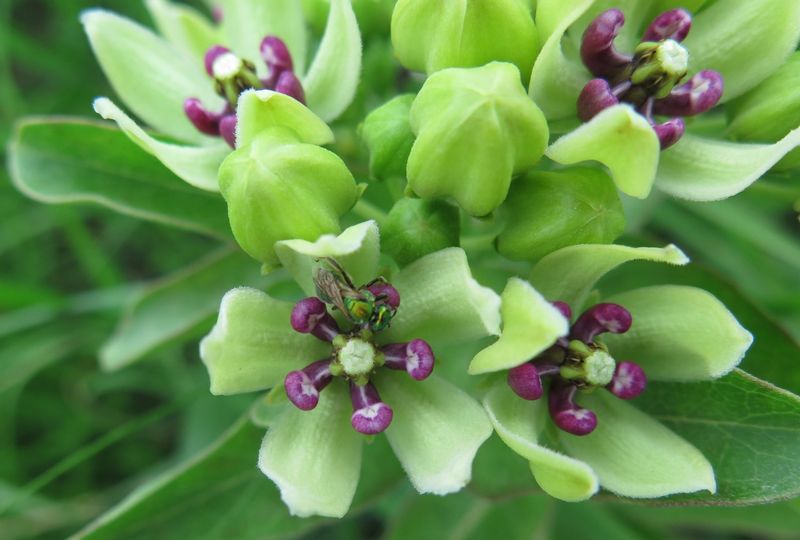
Sprawling stems radiate outward like spider legs, giving this prairie dweller its distinctive name. The creamy white flowers develop hints of green and purple as they mature, creating an ever-changing color display throughout summer.
Extremely drought-resistant, spider milkweed thrives in poor, rocky soils where little else grows. Its deep taproot allows it to access moisture far below the surface during extended dry periods.
12. Mexican Whorled Milkweed (Asclepias Fascicularis)
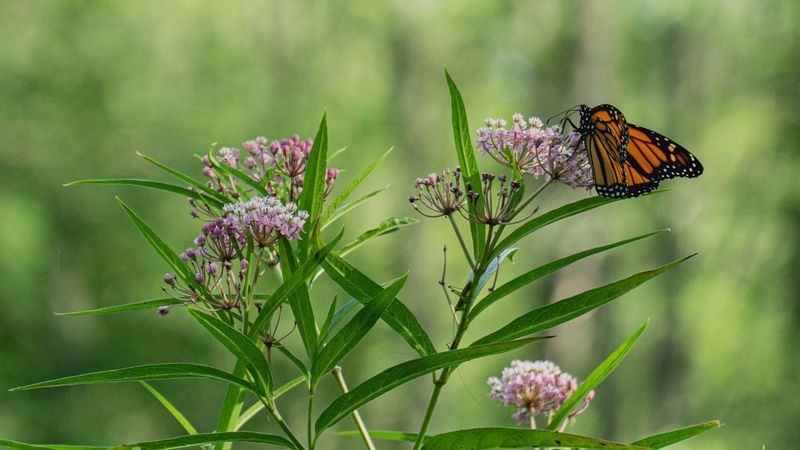
Feathery foliage creates a misty backdrop for the pale pink and white flower clusters of this western native. Incredibly water-wise, it thrives in California’s challenging Mediterranean climate with minimal irrigation once established.
Western monarch populations rely heavily on this milkweed species during their migration. Its slender profile allows it to blend beautifully into perennial borders without overwhelming neighboring plants.



